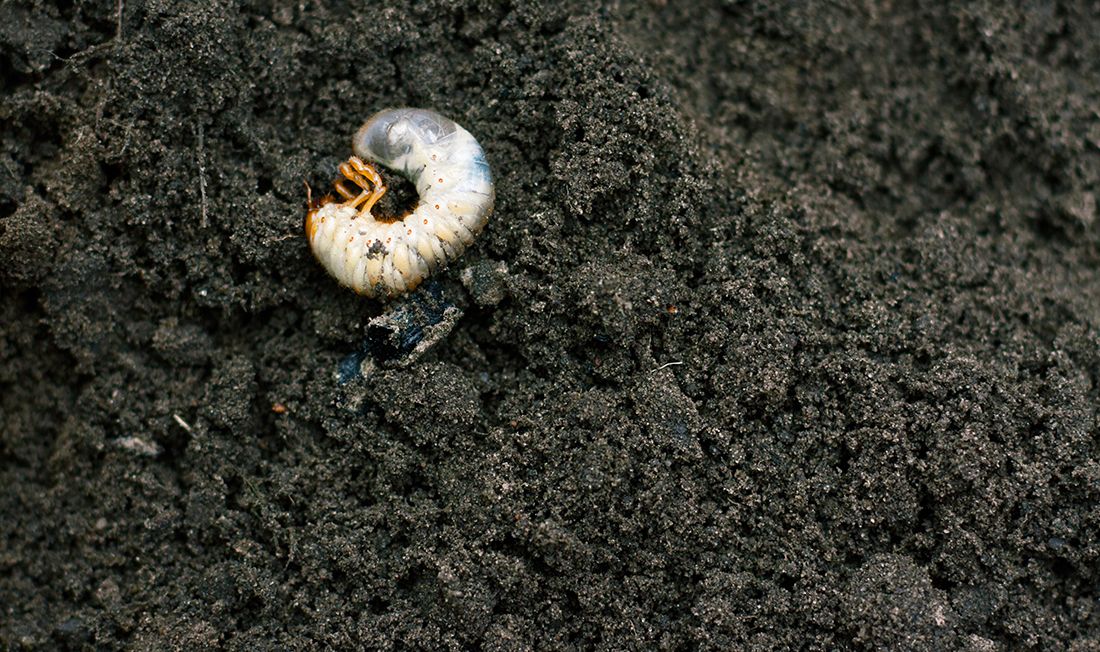Out of all of the defoliating insects that can damage lawns, the most widely-known may be grubs. A blanket term for the larval stage of a variety of beetles, grubs feed on the roots of your lawn, causing brown, wilted patterns with roots that are easily pulled from the ground. Secondary damage can be caused by animals, such as raccoons, that feed on grubs and dig through the lawn in search of their meal. While grubs most actively feed in the fall, it’s important to get an action plan together to control your grubs before the season begins.

How to Identify Lawn Grubs
Grubs are large, white C-shaped larvae of Japanese beetles, May and June beetles, and masked chafer beetles. The distribution of each individual species varies throughout North America, but for our purpose, we’ll discuss grubs as a whole. Adult beetles lay their eggs in lawns in late spring to early summer. These eggs hatch as larvae in the soil where they typically begin to feed on roots in late summer. The most severe damage from grub feeding is noticed in the fall. The most susceptible turfgrasses to grub damage are Kentucky bluegrass, perennial ryegrass, and creeping red fescue. Newer lawns, particularly sod, are at most risk for damage.

Why Proper Nutrition is Essential for Lawns
There are several steps that can be taken to prevent damage. First, maintaining proper nutrition and health is essential to ensure less damage and quicker recovery. Deeper, more vigorous root systems will enable the lawn to tolerate higher levels of grub activity without showing damage. If you’re establishing a lawn, consider more tolerant varieties. For cool-season lawns, turf-type tall fescues are an excellent option.

How to Prevent Grub Infestations
Adult females are attracted to moist soils, so consider this when irrigating in June. Reducing irrigation and promoting drier soil will make your lawn a less likely target. As the grubs mature throughout the summer, continue watering as normal to promote healthy root growth. While beetle traps are popular, these attractants lure larger populations of beetles to your lawn, resulting in a greater likelihood of higher grub populations.

Methods to Control Lawn Grubs
If all else fails, biological and chemical control options are available as well. When applied correctly, certain species of beneficial nematodes have been proven successful in killing grubs. Milky Spore is a disease-causing bacteria that can be applied as a dust or granule, but note that this product is only effective against Japanese beetle grubs. If you choose to deploy one of the various chemical options that are available, these must be applied in late spring or early summer as they’re generally ineffective against larger, more mature grubs.









